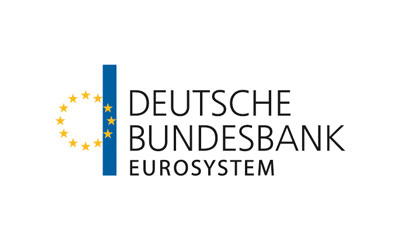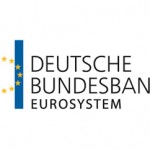Central Bank of Germany issued April Monthly Report

Structural developments in the German banking sector
The financial and sovereign debt crisis which has afflicted the euro area for more than seven years now has clearly left a mark on the financial market, having forced monetary policymakers to roll out highly accommodative measures and legislators to make adjustments to the regulatory framework. These changes have fundamentally transformed the landscape, particularly in the banking sector. This article in the April Monthly Report starts out by looking back at developments prior to the financial crisis before turning to the post-2007 era to shed light on the interplay between regulation, monetary policy and market behaviour as well as their impact on banks’ business models.
This article focuses its attention on banks’ asset and liability structures, looking particularly into the forms of funding used by German banks. The wave of financial market deregulation unleashed from the 1990s onwards, combined with the European integration process, had a transformative impact on banks’ business models, especially so among larger institutions in Germany. Amongst its many effects, deregulation allowed banks in Germany to make greater use of market-based funding and broaden their investment banking operations. This was a catalyst for a spell of stellar growth spearheaded by larger German institutions. Smaller banks, on the other hand, tended to be overshadowed by this global phenomenon and stuck to their traditional banking businesses.
The financial crisis put an end to larger institutions’ wave of expansion, which had been focused on capital market business and investment banking and fuelled by institutional funding from banks, insurers, investment funds and money market funds etc. Added to this, the most recent regulatory initiatives define concrete requirements for the structure of banks’ funding and aim to ensure that banks have sufficient loss-absorbing capacity, besides introducing, for the first time, a facility for resolving larger credit institutions. This newly created regulatory regime, if rigorously applied, could take pressure off fiscal and monetary policy going forward.
The slump in credit institutions’ earnings brought about by the crisis, the transformation of the financial market landscape and reforms to banking regulation have forced Germany’s banking sector as a whole to downsize proprietary trading, refocus on core business franchises and substitute capital market funding with deposits. This marked the first tentative steps towards reversing the very developments that had been observed in the run-up to the crisis. In recent years larger German banks in particular have barely managed to earn sufficient income to build up capital through retained earnings. But the ability to do so is a key prerequisite for a sustainable business model. Only banks which satisfy this requirement in the long run are fully capable of serving their function as providers of finance to the economy.
The evolution of labour market-related government expenditure in Germany
The extremely favourable and persistently robust development of the German labour market since the middle of the last decade has significantly eased the strain on public finances, with even the severe economic downturn of 2009 ultimately leaving no lasting mark. As a result, labour market-related government expenditure as a percentage of gross domestic product has contracted from 4% to 2½% since 2005.
The Federal Employment Agency’s spending on unemployment insurance benefit (I) and active labour market policy measures has fallen significantly, consequently making it possible to cut the contribution rate from 6.5% to 3.0%. Labour market-related expenditure by the Federal Government (the basic allowance for job seekers, in particular) initially rose markedly following the entry into force of the Hartz IV reform in 2005 but has been in steady decline since 2009. On the whole, the financial strain on local government budgets has also eased considerably.
From the Federal Employment Agency’s perspective, it appears that a further reduction in the contribution rate would, at most, only be financially manageable if the present extremely favourable labour market situation and the exceedingly low number of unemployment insurance benefit (I) recipients were to prove sustainable. Irrespective of this, it would also be possible to cut the contribution rate if central government were to assume financial responsibility for non-insurance-related benefits.
It is occasionally proposed at the European level to reform unemployment insurance by introducing a European unemployment insurance scheme to partially replace national schemes. However, in order for these proposals to hold water, the economic and socio-political framework of the European Union must be harmonised to a more in-depth and fundamental extent, for which there currently appears to be no majority.
At present, there are no signs of further noticeable relief at the central, state and local government levels with respect to labour market-related spending. The fiscal impact of the statutory minimum wage, which was introduced in 2015, hinges on the employment effects. All other things being equal, the wage increases triggered by the minimum wage will lower the need for transfer payments by general government and also increase its revenue. On the other hand, if jobs were lost, which would be a particular concern in the event of sharp increases in the minimum wage in future, it would also place a strain on public finances.
Transaction-related circulation trends in euro coins in Germany
The estimated volume of euro coins held for transaction purposes in Germany in 2011 stood at €2.3 billion; this corresponds to around 36% of the total volume of German (ie issued by the Deutsche Bundesbank) euro coins in circulation. Of the volume of these transaction-related cash holdings in terms of value, €1 and €2 coins accounted for 76%. In recent years, transaction-related cash holdings of all denominations except the €2 coin have remained the same. Only the volume of €2 coins held for transaction purposes has increased significantly, which has made a notable contribution to the growth in the circulation of this denomination.
Unlike the other motives for holding coins, it is comparatively easy to model the transaction motive empirically (via cash consumption). Structural models are therefore the most suitable method of determining the demand for €2 coins. Small-denomination coins (1 and 2-cent coins) account for a comparatively low share of the coins held for transaction purposes (less than 30%).This is because larger volumes of them are lost or people hoard them in order to lighten their wallets. Internationally, it is presumed that those German euro coins which are held outside the euro area are, on balance, being hoarded on a permanent basis. Owing to insufficient data, the volume of coins held for domestic transaction purposes by sector cannot be fully captured. Households and credit institutions accounted for the largest share of these transactions.
Source: Bundesbank – Summary of the April Monthly Report



























